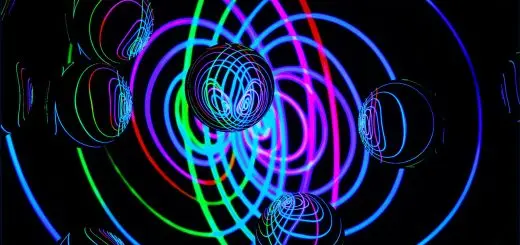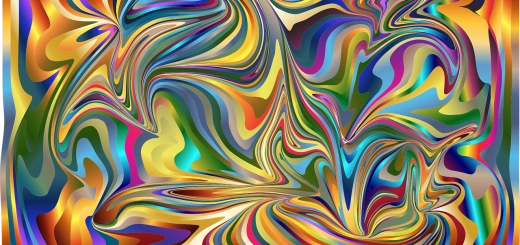Inanna: Queen of Heaven and Descent into the Underworld

Looking for more amazing products? Check out our online store and explore our collection here! Happy shopping!
Before diving in, please note: This post is for informational purposes only. If you’d like to know more about how we approach topics, feel free to check out our friendly Disclaimer Page.
Hey there, amazing readers! 
We’re committed to delivering quality posts, and your support (even just sticking around despite the ads) means everything to us. So, bear with us, and thanks for helping us keep the good vibes rolling. Now, on to the fun stuff!
TRANSLATE BUTTON AT THE END OF THE ARTICLE
Overview: Inanna, the Mesopotamian Goddess
Inanna, also known as Ishtar, was one of the most prominent deities in ancient Mesopotamian mythology.
She was worshipped as the Queen of Heaven and was revered for her powers of love, fertility, and war.
As the goddess of both love and war, Inanna represented the duality of life and played a crucial role in the lives of the people of ancient Mesopotamia.
Mythology: Inanna’s Role as the Queen of Heaven
Inanna was regarded as the goddess of love and fertility, and her role as the Queen of Heaven was central to Mesopotamian mythology.
She was believed to be the daughter of the moon god Nanna and the sister of the sun god Utu.
Inanna was often depicted as a beautiful, youthful goddess adorned with a crown and carrying a staff or a bow.
She was associated with the planet Venus, which was seen as a symbol of femininity and beauty.
As the Queen of Heaven, Inanna held great power and was responsible for the well-being of humanity.
She was believed to bring love, prosperity, and fertility to the people, and her worshippers would often pray to her for blessings in their daily lives.
Inanna’s role as the Queen of Heaven was intertwined with her role as the goddess of love and fertility, as she was seen as the divine source of these vital aspects of human existence.
Inanna’s Descent: A Mythological Journey to the Underworld
One of the most famous stories involving Inanna is her descent into the underworld.
The myth tells of Inanna’s decision to visit her sister Ereshkigal, the Queen of the Underworld.
Inanna’s descent was not merely a whim; it was a deliberate act of seeking power and knowledge.
In the myth, Inanna knew that by descending into the underworld, she would gain immense wisdom and become a more powerful and revered goddess.
The Seven Gates: Challenges Faced by Inanna in the Netherworld
In her journey to the underworld, Inanna had to pass through seven gates, each guarded by a different deity.
At each gate, Inanna had to surrender a piece of her clothing or jewelry as a symbolic act of shedding her earthly identity.
This process represented Inanna’s gradual transformation as she left behind her divine powers and embraced her mortal form.
The seven gates symbolized the different stages of initiation and purification that Inanna had to undergo in order to gain access to the realm of the dead.
Each gate represented a different challenge, such as giving up her crown, her breastplate, and even her royal robes.
Through these challenges, Inanna demonstrated her courage and determination to reach the underworld and gain its wisdom.
Ereshkigal: Inanna’s Encounter with the Queen of the Underworld
Upon reaching the depths of the underworld, Inanna encountered her sister Ereshkigal, the Queen of the Underworld.
Ereshkigal was portrayed as a dark and fearsome deity, ruling over the realm of the dead with absolute power.
Inanna’s encounter with Ereshkigal symbolized the meeting of life and death, light and darkness.
During their encounter, Ereshkigal subjected Inanna to a series of trials and torments.
Inanna was stripped of her divine powers and was left powerless and vulnerable.
This encounter highlighted the cyclical nature of life and death and the inevitable descent into darkness that all living beings must face.
Inanna’s Struggle: The Price Paid for Seeking Power and Knowledge
Inanna’s descent into the underworld came at a great cost.
As she attempted to return to the realm of the living, Ereshkigal demanded a ransom for her release.
Inanna’s husband, Dumuzid, offered himself as a substitute, but Inanna was unwilling to let him take her place.
Instead, she chose to send demons to fetch him, which led to Dumuzid spending part of each year in the underworld.
This myth illustrates the sacrifices that Inanna was willing to make in her quest for power and knowledge.
It serves as a cautionary tale, warning of the dangers and consequences of seeking divine wisdom without considering the repercussions.
Symbolism: Unraveling the Metaphors in Inanna’s Descent
Inanna’s descent into the underworld is rich in symbolism and metaphor.
The seven gates represent the stages of initiation and purification, while Inanna’s surrendering of her clothing and jewelry symbolizes the shedding of her mortal identity.
This process of stripping away her divine powers represents the transformation and rebirth that occur through the journey to the underworld.
The encounter between Inanna and Ereshkigal symbolizes the eternal struggle between life and death, light and darkness.
Inanna’s temporary death and subsequent resurrection represent the cyclical nature of life and the transformative power of the underworld journey.
Transformation: How Inanna’s Descent Shaped Her Divinity
Inanna’s journey to the underworld resulted in a profound transformation.
Through her descent, she gained wisdom, knowledge, and a deeper understanding of the human experience.
Inanna emerged from the underworld as a more powerful and enlightened goddess, possessing the ability to bring forth both life and death.
Her journey served as a testament to the transformative power of embracing the darkness within oneself.
Ancient Rituals: Celebrating Inanna’s Descent and Resurrection
In ancient Mesopotamia, the story of Inanna’s descent was celebrated through rituals and ceremonies.
These rituals often involved the reenactment of Inanna’s journey to the underworld, with participants embodying the roles of Inanna, Ereshkigal, and other deities.
Through these rituals, the people sought to connect with the divine and gain insight into the mysteries of life and death.
Influence: Inanna’s Impact on Mesopotamian Culture and Art
Inanna’s story had a profound influence on Mesopotamian culture and art.
She was one of the most widely worshipped deities in the region, and her imagery can be found in numerous ancient artifacts, such as statues, seals, and reliefs.
Inanna’s role as the Queen of Heaven and her descent into the underworld became recurring themes in Mesopotamian art, symbolizing the eternal cycle of life and death.
Contemporary Significance: The Relevance of Inanna’s Story Today
Inanna’s story continues to resonate with people in modern times.
Her journey into the underworld serves as a reminder that darkness and challenges are an inherent part of life.
The myth teaches us the importance of embracing our own shadows and undergoing personal transformation.
Inanna’s story encourages us to confront our own fears and limitations in order to grow and evolve as individuals.
Conclusion: Inanna’s Eternal Legacy and Her Lesson for Humanity
Inanna, the Queen of Heaven, and her descent into the underworld remain an enduring and influential mythological tale.
Her story holds valuable lessons about the transformative power of embracing darkness, the importance of seeking knowledge and wisdom, and the sacrifices one must make in the pursuit of power.
Inanna’s legacy lives on through her impact on ancient Mesopotamian culture and art, and her story continues to inspire and guide individuals on their own journeys of self-discovery and transformation.

The Enlightenment Journey is a remarkable collection of writings authored by a distinguished group of experts in the fields of spirituality, new age, and esoteric knowledge.
This anthology features a diverse assembly of well-experienced authors who bring their profound insights and credible perspectives to the forefront.
Each contributor possesses a wealth of knowledge and wisdom, making them authorities in their respective domains.
Together, they offer readers a transformative journey into the realms of spiritual growth, self-discovery, and esoteric enlightenment.
The Enlightenment Journey is a testament to the collective expertise of these luminaries, providing readers with a rich tapestry of ideas and information to illuminate their spiritual path.
Our Diverse Expertise
While our primary focus is on spirituality and esotericism, we are equally passionate about exploring a wide range of other topics and niches 

To ensure we provide the most accurate and valuable insights, we collaborate with trusted experts in their respective domains 
Our blog originally focused on spirituality and metaphysics, but we’ve since expanded to cover a wide range of niches. Don’t worry—we continue to publish a lot of articles on spirituality! Frequently visit our blog to explore our diverse content and stay tuned for more insightful reads.
Hey there, amazing reader! 
Check out our store here and take a peek at some of our featured products below! Thanks for being awesome!












